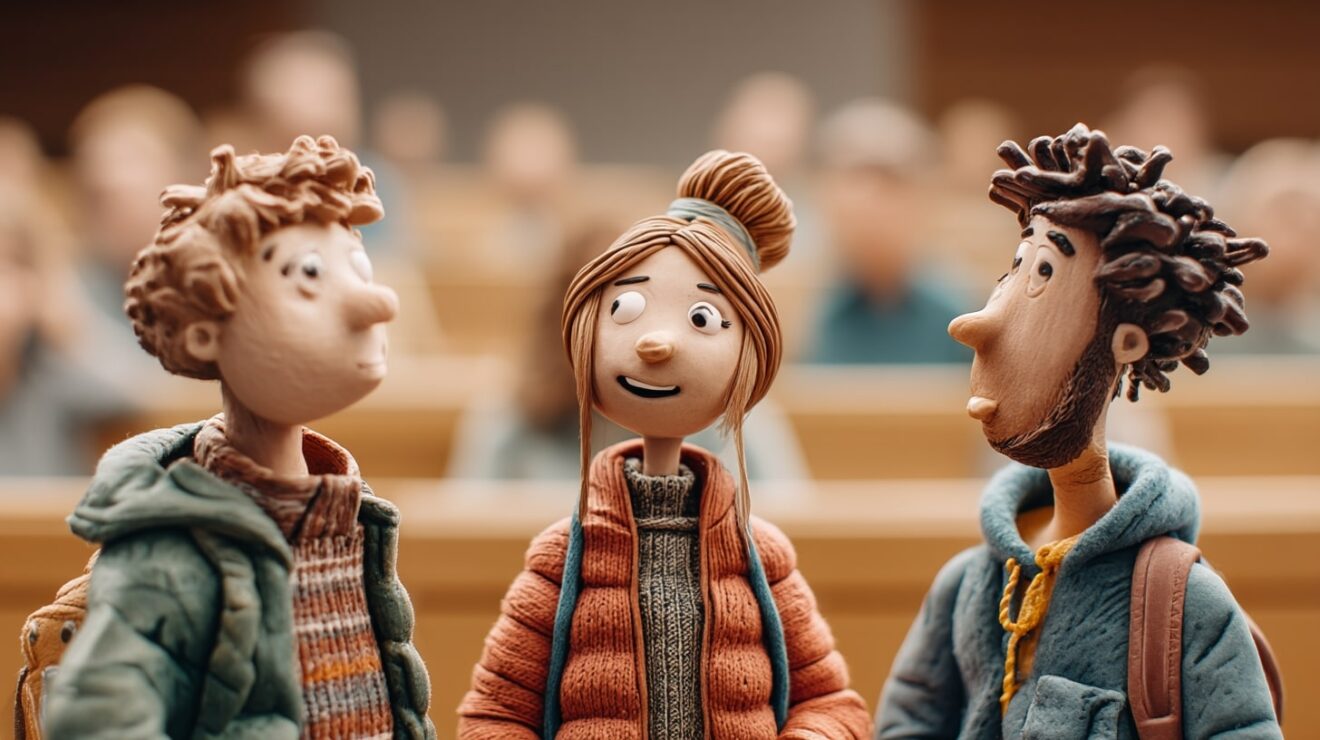It’s become something of a commonplace to argue that undergraduate degrees need to become more interdisciplinary.
The disciplines are sometimes presented as siloes that artificially divide reality and prevent students from engaging with the real world, with all its messy, multifaceted problems that cannot be solved through any single lens. In this context, students are encouraged to engage directly with real-world problems, from plastic pollution to knife crime.
There are, as Nicky King recently pointed out in Wonkhe, a number of practical barriers in the way of initiatives that hope to make the undergraduate curriculum more interdisciplinary. These include many of the typical banes of the academic’s life more generally – timetabling, prerequisites, bureaucratic obstinacy.
But I would argue that we also need to think more carefully as educators about the conceptual questions that a problem-based, interdisciplinary curriculum throws up. Specifically, we need to be clearer about what we mean when we use apparently straightforward terms like “learn”, “problem” and “the real world” too casually.
This is not an exercise in pedantry (well, let’s say it’s not only an exercise in pedantry). It is also an invitation to take a step back and eye with a healthy academic scepticism any pedagogical tool (or any thing full stop) that is presented as a panacea. It is to ask what, precisely, the problem is that problem-based learning is supposed to solve.
What do we mean when we say “solving a problem”?
Problem-based learning was originally devised in the medical school at Canada’s McMaster University in the 1960s. It was created to help students diagnose medical complaints: that is, to take a complex presentation of symptoms and come to a judgement on the likely cause.
Diagnosing a medical condition in an individual is, however, not the same as eradicating it from a population altogether. The general practitioner is not presented with a global problem but a local one; not a general question for basic and applied research (“how can we eradicate cancer?”) but a specific, technical one (“does this patient have cancer?”). Tasking the lone GP with eradicating cancer would be a quite unfair misunderstanding of the scope of their expertise, or indeed of any individual’s expertise.
While a well-trained individual may be able to diagnose a medical condition, eradicating that condition from the population will take a large number of individuals with all sorts of different specialisms – and it will take a long time, if it ever happens at all. Yet the “real-world problems” our undergraduates are generally tasked with solving are far more like eradicating cancer than diagnosing it. They are multifaceted, historically quite intractable national or global problems.
While we may call both of these problems to be solved in everyday language, they are not similar sorts of problems and they do not call for similar sorts of solutions. This is why solving the housing crisis in the Maldives (something an acquaintance’s thirteen-year-old godson was recently tasked with) may prove rather trickier than, say, figuring out what I did with my keys.
Confusing the difference between these two meanings of “to solve” – to diagnose and to eradicate – is what leads us to a situation where it looks reasonable to task a lone individual (and even a lone teenager) with solving climate change.
When we talk of interdisciplinary problem-solving, then, do we refer to an interdisciplinary team of disciplinarians, or to an interdisciplinary individual? And if what we need is interdisciplinary individuals, what is it about the bushy-tailed eighteen-year-old that makes them particularly equipped to do interdisciplinary work? What, precisely, is the eighteen-year-old interdisciplinarian bringing together in order to solve world poverty?
Rather than interdisciplinary individuals, are we in fact encouraging students to think of themselves as transdisciplinary – that is, as transcending the fusty old disciplines to somehow get closer to “reality”, which the disciplines obscure?
What do we mean when we say “the real world”?
One of the ways that working in problem-focused, interdisciplinary ways is sometimes presented to students as “real” is through its apparent similarity to the world of work.
But do all modern workplaces eschew the idea of departments based around shared expertise – accountancy, say, or sales? Fairly clearly, the answer to that is no. Sometimes we need to operate in just this compartmentalised way to get work done – while at others, it’s true, we need to make up a group with varied expertise to solve a certain problem together.
But both ways of working require the existence of individual expertise in the first place – it would not be terribly efficient if everyone got to have a bit of a go at the accounts, and then tried to fix the coffee machine, for instance. And neither approach is closer to reality. Reality is not there waiting to be discovered (or, at least, it is no more there waiting to be discovered at work than in a classroom). Instead, at work as in education we need to make conscious choices about how best to organise ourselves in order to achieve some particular outcome, while acknowledging that we could have chosen otherwise.
What do we mean when we say “learn”?
All right clever dick, you may be thinking. So eighteen-year-olds won’t be the ones to broker world peace, and tasking them to do so may feel a bit daft. The point is that by addressing themselves to challenges of this sort, they learn valuable tools of problem-solving that they will be able to apply to perhaps more humble problems they encounter in their educational, professional and personal lives.
It’s certainly uncontroversial to say that many people learn well by working through concrete applications. No doubt we all have memories of the abstract, example-free undergraduate lecture that left us wondering, “so what?”
But what do we learn through an application? We don’t just learn about the application but about the thing that it has applied – that is, an application is an application of something, outside of itself (otherwise it is not an application at all but just some sort of thing to which we point). The difficult question for educationalists is not whether concrete examples help people to learn (broadly, they do), but how we move between a concrete case and the more general principle it exemplifies, in ways that allow learners to identify new problems for themselves.
During my recent research project on interdisciplinary undergraduate degrees, a student interviewee explained that she had once been interested in becoming an astrophysicist. She captured well the difference between context-dependent and context-independent learning – that is, the difference between a substantive topic or application, and the disciplinary work needed to fully understand the processes behind that thing:
I think it’s a very different thing to want to study [astrophysics] because you think it’s interesting, or you like the idea of how you could possibly time travel, or black holes or something like that. It’s a different story to sitting in the lab and doing maths the whole day!
Failing to recognise the difference between context-independent and context-dependent learning (or even suggesting that context-dependent learning is all there is to education) can make solving the “real-world problem” appear to be an end in itself. Yet if the example is not an example of a broader process, issue or principle, and if the connection is not made explicit, students will not be able to take that learning to a new case.
We may sense that it is more engaging to focus on the black hole alone, rather than the apparently tedious disciplinary tools needed to understand it. But we need to supply students with both, along with the connections between the two, if they are to become competent, independent users of their education in their own right.
What’s the problem?
Just like any other pedagogical tool, learning through real-world problems is not good or bad in and of itself. But we are obliged as educators to know why we are using any approach. We need to know where students are now and where we would like them to be, and come up with ideas about how to bridge that gap. This takes time, and it involves making mistakes. It may be that problem-based learning is the solution to some of our problems, but we can only figure that out in the midst of a full and frank conversation about what the problems actually are.
And beyond the conceptual issues that require disentangling, we might ask ourselves a final, and rather simple, moral question. Given all of the other pressures on our young students – do we really need to put solving climate change on their shoulders too?













Thank you Kathryn. Those are, indeed, important questions to ask. I would suggest that the question underlying all of those is: “What are outcome we trying to achieve through this approach to learning?” My answer to that would be twofold. 1. We are trying to enable students to acquire, develop and apply the resources they need to thrive in an increasingly complex and changing world. Note I said ‘resources’ not just skills or knowledge because that could include awareness, self-awareness, confidence, connections, etc. 2. We are trying to provide society with people who could tackle the wicked problems that we… Read more »
Thanks for engaging with the article, David. It’s very interesting to think about these problems as related to different ways of thinking, equally valuable. And as you say we always need to be asking what we hope to achieve with any teaching approach we take.
I guess I’m less convinced that we’re in need of more maverick interdisciplinarians who reckon they know enough physics to do space travel better than NASA, or that they can manage industrial strategy on the basis of a PPE degree. Fewer over-confident generalists, please, if you ask me!
Thanks again for engaging.
Thanks for an interesting article. I agree it’s important for there to be robust foundations to “real world” and problem based learning. It’s not a panacea, and we need to be careful that we don’t cobble activities together and assume students will get all the benefits associated with authentic learning tasks. It can easily end up with students barely scratching the surface of complex issues. However, I don’t really think these issues are specific to problem based learning. It should be commonplace to have robust conversations about the content and methods of teaching, as well as evaluating whether the methods… Read more »
Thanks Tom. I know there are many people thoughtfully using approaches like this, and thinking carefully about why we set a problem, what kind of problem should be set, and how we might assess for the outcomes we actually mean to test for (ie not ‘And DID you solve world poverty?). I’ve seen loads of good examples where local problems with clearly defined parameters work well. My aim with the article is more university managers who have decided this is the way to go in a hazy, big-picture way, rather than teachers on the ground who are often thinking carefully… Read more »
Thanks for your response Kathryn.
Yes I think that’s a good point about avoiding binary approaches – I agree that making those links is important, and that it’s hard!
A really thought-provoking piece; thank you. And I very much agree with the points you make. Many years ago I managed a project (FDTL5, if anyone remembers) developing problem based learning for Politics. But what we did feels very different from what you describe – presumably what’s happening or being advocated now. All our problem scenarios were based on real life cases, but small ones, from local government and the voluntary sector, and in the main they had already been resolved, one way or another. Each scenario was designed to apply / illustrate / exemplify a particular concept or aspect… Read more »
Thanks for this, Sarah. That sounds like a really well thought-through way of introducing these ideas in a measured way to a degree. There are loads of teachers doing work like this: the problem is when senior managers get it in their head that they’ve found the golden ticket and try to enforce simplified versions on staff who don’t have the time (or, reasonably enough, the inclination) to think it all through.
Appreciate your engagement with the article.
Thanx for this.
I don’t understand the difference between context-dependent and context-independent learning. Isn’t learning by sitting in a lab doing maths all day learning in a very specific context which requires skills to decode and to apply to other contexts?
Hi Gavin. Many thanks for your engagement and sorry for the delay in my response. Perhaps you’re right that these terms are too simplistic, since they encourage us to maintain a binary between applied and unapplied (real worlds and ivory towers) when in fact all learning is about trying to do some particular, concrete thing. What the distinction does, however, is force us to question why we want students to learn such-and-such in the first place. For instance, in my own discipline of sociology we often ask students to think about contemporary phenomena like the gig economy. If students have… Read more »